The good, the mediocre and the annoying
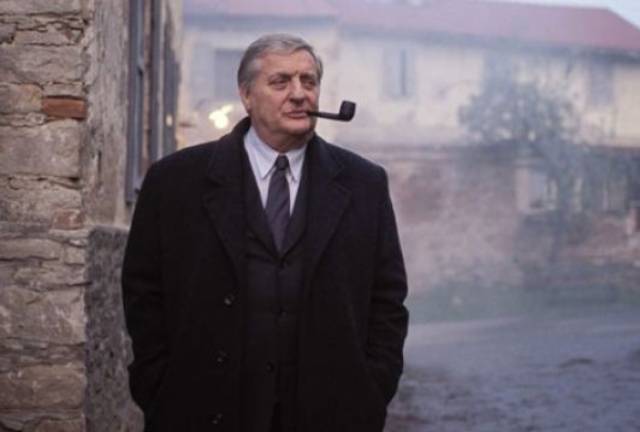
We’ve been having quite a summer here in Manitoba – temperatures in the mid- to high-30s and it’s been more humid than usual (with the humidex getting up into the 40s). It’s pretty uncomfortable and I don’t have air-conditioning in my apartment – a fan can only get you so far when the weather is this relentless. Needless to say, I haven’t been sleeping too well. I wake early, log onto my work computer by 6AM, do what little I can from home, then log off again early in the afternoon after lunch. On many days, I take a long walk in the baking sun (my favourite route is about four miles; a few days ago, after being stuck inside for two days of rain, I extended that by another three miles), get home and take a shower to cool off, then watch a movie before dinner. In the evening there’ll be another movie or two before I crash for the night.
There are some days when I – yes, even I! – can’t muster the energy to pick a movie to watch. Those days, I tend to veg in front of YouTube clips (as much as it drives me insane, I can’t shake an addiction to U.S. political commentary) and sometimes even read for a while. Lately I’ve started on Georges Simenon’s Maigret books. I caught the bug a few months ago when someone in my building discarded a fat paperback collection of stories and novellas called Maigret’s Christmas and, although I’ve never been much of a mystery reader, I got hooked by the character – slow, watchful, gathering together all the little details that no one else notices until he’s pieced together the crime and identified the killer.
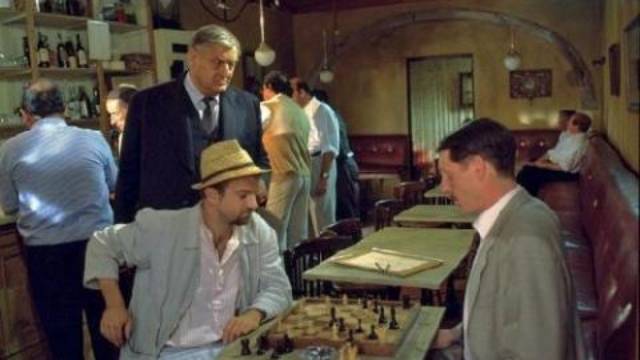
Having enjoyed the book, I spent a big chunk of May watching all fifty-four feature-length adaptations made for French television between 1991 and 2004. The producers’ plan had originally been to adapt every single story and novel (somewhere around eighty-five), but it was finally abandoned when star Bruno Cremer’s health deteriorated to the point where he couldn’t continue (I wish they’d stopped a little sooner because the final episode, Maigret et l’etoile du nord, was painful to watch because of Cremer’s decline, his voice very noticeably dubbed by someone else because of his throat cancer).
The series, co-produced by multiple companies in multiple countries, was largely shot in and around Prague, standing in for Paris in the 1950s. The novels spanned four decades, from 1931 to 1972, but it obviously made production sense to contain them in a single period which would be more manageable to recreate, and one of the series’ pleasures is the period flavour. I have no idea what kind of budgets were involved, but the project was obviously remarkably ambitious, each episode shot cinematically on visually engaging locations with an impressive consistency considering the timespan and the number of directors of different nationalities and numerous cinematographers (including Raoul Coutard on one episode) involved.
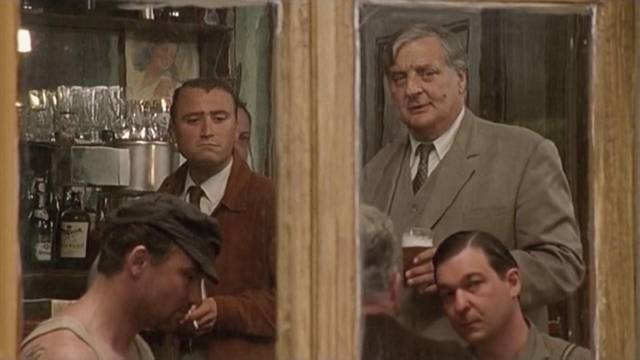
Some episodes are straightforward and naturalistic, while others are quite stylized (a couple directed by Juraj Herz are visually dazzling), but all are tied together by Cremer’s performance. His stolid patience mixed with an intelligence he doesn’t flaunt, though he has little time for incompetence or dissimulation, form the still centre around which the narratives spin. The cases themselves, mostly murders, offer gateways into private lives which are sordid, pathetic, corrupt and often terribly sad. Peering into these lives illuminates social and political attitudes of the post-war period, rife with class tensions and shot through with a refreshing sexual frankness which the characters take for granted. There is also an interesting view of the quirks of the French police and judicial system, which is quite different from what we’re used to from British and American crime shows.
While I thoroughly enjoyed the series, I found that a few of the less satisfying episodes were ones adapted from stories I’d already read in that collection – in a couple of cases this was due to the necessity for expanding a brief story to feature length, but in others it was a matter of changing major details of the case, essentially inventing a new story … so I’m not sure how I’ll feel in retrospect now that I’m reading the novels. I’m tackling them chronologically and so far it’s easy to see the character through the filter of Cremer’s performance, but if I run into a lot of dissonance between individual books and the films I’ve already seen it could become annoying. (The second novel, Le Charretier de la Providence [The Crime at Lock 14, 1931], turns out to be very similar to the corresponding episode, number 34 Maigret et la croqueuse de diamants [Maigret and the Fortune Hunter, 2001], so it may not be too much of a problem.)
*
Indicator
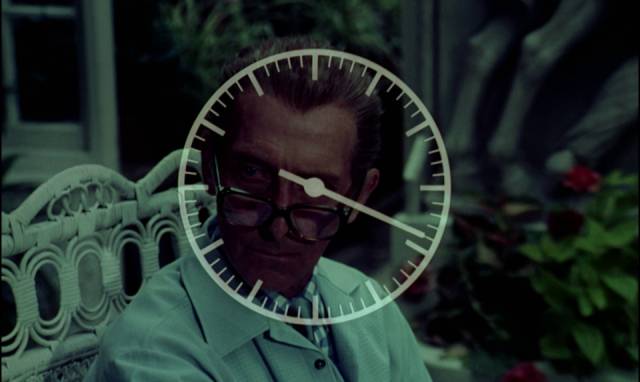
As I’ve mentioned here before, Indicator is one of the finest companies now releasing movies on Blu-ray. They do an exemplary job with excellent transfers and extensive special features. They cover a wide range of films, from the obscure to the well-known, from high drama to low entertainment. Which is why I occasionally end up investing in releases which I don’t really have a good reason for wanting. The thing is, because of the care and attention they put into their releases, I get sucked into thinking that there must be more to some movie I saw years ago and didn’t think was particularly good. That’s why I bought their edition of Richard Marquand’s dull horror The Legacy (1978) … after all, that came out around the same time as the Bloody Terror box set, their substantial tribute to Norman J. Warren, and Jim O’Connolly’s Berserk (1967) – the appeal of those genre movies rubbed off on Marquand’s film, at least until I actually watched it again for the first time since its theatrical release.
Which is a long-winded way of excusing my purchase of a couple of recent Indicator Blu-ray editions of movies I had fairly low opinions of back in the day – as usual, I hoped my memory would prove faulty, but sadly seeing them again merely confirmed my old impressions.
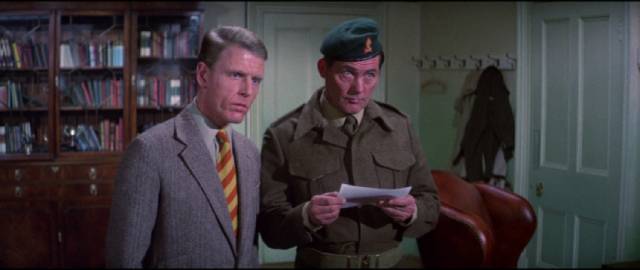
Force 10 From Navarone (Guy Hamilton, 1978)
By the end of the 1950s, at a distance of fifteen years, no-nonsense accounts of the Second World War began to give way to big, star-studded movies which used the war as a backdrop to heroic adventures. As the decade advanced, these movies began to forget the horrors of the war, becoming more cartoonish (and frequently cynical) with nonsense like Brian G. Hutton’s Where Eagles Dare (1968) and, a few years later, Kelly’s Heroes (1970). One of the key movies to initiate this metamorphosis was J. Lee Thompson’s The Guns of Navarone (1961), a huge prestige effort with a prominent cast, big action set-pieces, and a bunch of awards guaranteed to inspire imitators like John Sturges’ The Great Escape (1963) and Robert Aldrich’s The Dirty Dozen (1967).
Back then, the industry sought to cash in on success through imitation. The idea of franchising was barely a gleam in anyone’s eyes (the James Bond series provided impetus for that development, but it still took a while to catch on), so while the idea of a sequel to Guns was mooted at the time, the producers resisted because the original film remained a money-maker for years and a follow-up would probably have cut into those profits.
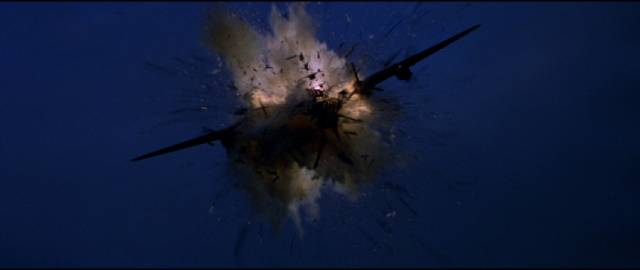
Nonetheless, a story was cooked up (attributed to the original movie’s writer-producer John Foreman) and author Alistair MacLean wrote a novel in the late ’60’s. Various companies and producers announced an upcoming production, but it repeatedly failed to materialize. And yet, for some reason, seventeen years after Guns, the money came together and the sequel finally went before the cameras in the then Yugoslavia, Malta and Jersey. The only connection to the original was a couple of characters – Captain Keith Mallory (Gregory Peck in the original, Robert Shaw in the sequel) and demolition expert Corporal John Anthony Miller (David Niven, Edward Fox) – and a brief prologue which recaps the ending of Guns.
Directed by the sturdy but uninspired Guy Hamilton (best known for a string of Bond movies), everything about Force 10 From Navarone (1978) feels tired and out-of-date. Instead of a major operation which will change the course of the war, it’s about a small commando mission involving partisans, double-agents, and an ad hoc action to stop a German advance. The mission seems poorly planned from the start – most of the team and almost all the equipment are lost before they even arrive in the Yugoslav mountains as the plane for some reason has no defensive armaments and gets shot down by German fighters with no resistance.
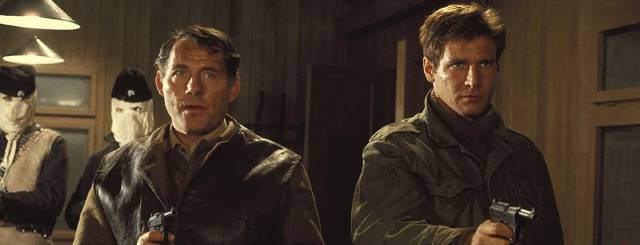
There are actually two missions. The decimated unit under an American officer named Barnsby (Harrison Ford, fresh from Star Wars and as uncomfortable here as Clint Eastwood was in Hutton’s two WW2 adventures) was sent to destroy a huge bridge before the German army can cross it. Mallory and Miller, on the other hand, piggy-backing on Barnsby’s operation, have come to assassinate a dangerous German agent who has infiltrated the Yugoslav partisans and is sabotaging resistance efforts. Although Mallory has a bad leg and Miller had become a civilian again, they’ve been dragged back in because both of them can identify the spy as someone they had run into on the previous mission to destroy the guns of Navarone.
The handful of survivors from the plane crash – Barnsby, Mallory, Miller, Reynolds (Angus MacInnes) and Weaver (Carl Weathers) – meet up with a group of what they believe are partisans, but are actually Chetniks fighting with the Germans. Barnsby and Mallory manage to escape with the help of Maritza (Barbara Bach), the most bloodthirsty Chetnik, who turns out to be working with the partisans. They meet up with the actual partisans, commanded by Petrovitch (Alan Badel), whose second-in-command Lescovar (Franco Nero) is the German agent who sabotages every operation while Petrovich attributes all the failures to the incompetence of the British.
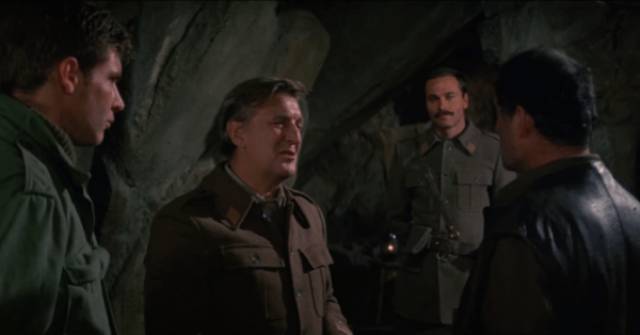
When Miller declares it would be impossible to blow up the very sturdy bridge, an alternate plan is devised which involves blowing a hole in a nearby dam so that the mass of escaping water will sweep away the huge bridge supports. This plan involves stealing explosives from the Germans, during which Lescovar is finally exposed and dealt with. The climax involves smashing a miniature dam and unconvincingly destroying a miniature bridge with a seriously unimpressive flood.
The movie plods through each plot point, never generating any excitement or suspense. Only Shaw and Fox seem to be enjoying themselves, underplaying their parts with an air of amused detachment, signalling their awareness that this is all cliched nonsense.
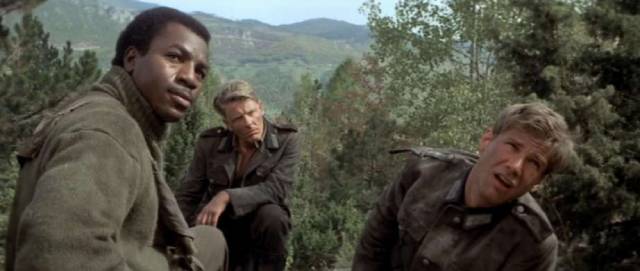
And yet, Indicator have gone all out with their special edition two-disk set. Both the theatrical and extended cuts are included, each on its own disk. The most interesting extra is a 26-minute side-by-side comparison which shows that it’s not just an extra 8 minutes, but significant editing and sound differences exist between the two. Action scenes are cut differently and, most oddly, a lot of additional lines are dubbed into the shorter theatrical cut – all seemingly completely extraneous off-screen throwaway comments. Very hard to see why anyone would have thought them necessary.
There’s a commentary on the long version, an archival making-of, some new cast and crew interviews, a tribute to cinematographer Christopher Challis, a lengthy archival interview with composer Ron Goodwin, and a super-8 home viewing version of the feature. The thick booklet has lengthy archival reports and interviews from the shoot, brief excerpts from contemporary reviews (generally negative), and a new essay by historian Sheldon Hall which fills in the long history of the project’s gestation, but at no point expresses any enthusiasm for the movie itself.
So the big question remains: why bother to devote so much effort to a mediocre box office flop?
*
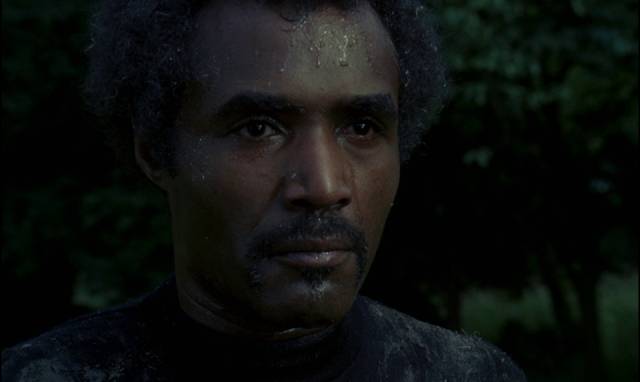
The Beast Must Die (Paul Annett, 1974)
I had slightly higher hopes for Paul Annett’s The Beast Must Die (1974) because, like other Amicus productions from around the same period, Gordon Hessler’s Scream and Scream Again and Alan Cooke’s The Mind of Mr. Soames (both 1970), it departs from the company’s familiar omnibus formula and mixes genres – something I always find interesting, and often entertaining. In this case, Agatha Christie’s And Then There Were None gets tossed in the blender with Richard Connell’s The Most Dangerous Game and The Wolf Man, with Bondian high-tech surveillance equipment included to add some seasoning.
Adapted by Michael Winder from There Shall Be No Darkness, a 1950 novella by science fiction writer James Blish, the high concept story has a wealthy big game hunter inviting a group of people to his estate for the three days of the full moon. Once there, they are as much his prisoners as his guests; his research has led him to suspect that one of them is a werewolf and he intends to expose – and kill – the monster. It’s a promising idea and I was happy to buy a ticket to see it back in 1974 … but I clearly recall being disappointed, though I couldn’t recall exactly why, other than the silly gimmick (inspired by William Castle) of having a “werewolf break” fifteen minutes before the end to give the audience time to guess “from the clues” who is actually the beast. That gimmick falls flat because there haven’t actually been any clear clues to be deciphered.
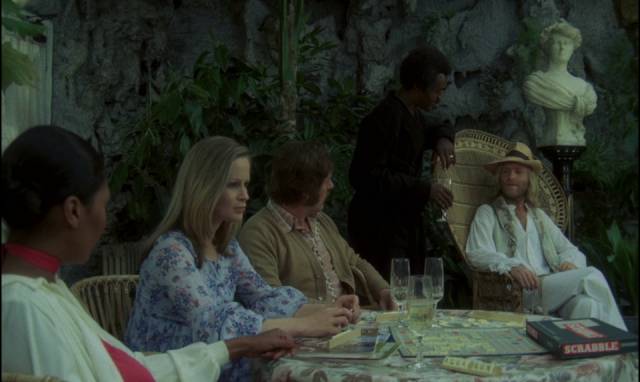
I will give it points for one twist after the break which initially seems to be a massive scripting error until the mechanics of werewolfery are clarified (the condition is given a “scientific” basis in a contagious glandular malfunction). But overall, the movie is poorly written (previously, Winder had only written episodic television, and he only had two subsequent feature credits), clumsily directed and in its central performance completely misconceived. The latter in particular is disappointing because the production broke with the conventions of the time by casting a Black actor as the lead without flagging it as anything audacious. That at least is refreshing.
Unfortunately Calvin Lockhart as millionaire Tom Newcliffe is so tonally off throughout that he would have sunk the film single-handedly even if there weren’t numerous other problems. Newcliffe, instead of presenting the get-together as a puzzle to be solved by everyone present, comes across as angry and abusive all the time … it’s baffling why any of his “guests” would have accepted his invitation in the first place, let alone put up with his obnoxious attitude and stay (it’s only later that he disables all their cars). But worse than his bad manners is his total incompetence as a hunter; although modelled on Count Zaroff, and aided by all his high-tech tracking equipment, he wanders around cluelessly while the werewolf roams the house and grounds, gradually killing off the other guests. Newcliffe always arrives too late and just yells at everyone, throwing around accusations based on nothing.
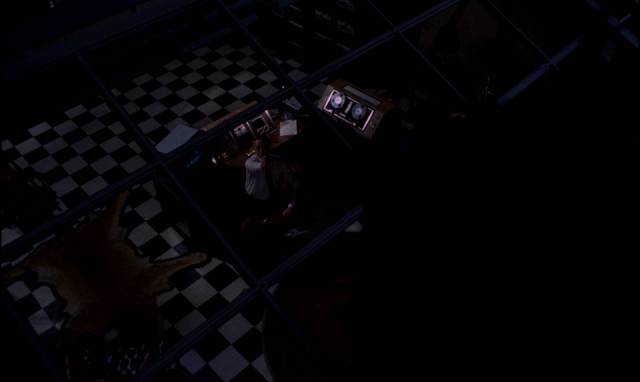
Despite his reputation, Newcliffe doesn’t seem to know how to use a gun effectively. Even when he does get close to the beast, he repeatedly fails to take a shot. And in the worst sequence in the movie, having tracked it to an outbuilding, he wildly fires his machine gun without any line of sight on the werewolf, destroying the building and using up almost all of his silver bullets for no purpose. Then, when the beast emerges and attacks Newcliffe’s helicopter pilot, he stands there watching, then shoots the helicopter which immediately blows up. It’s not entirely clear, but the pilot may have died from Newcliffe’s bullets rather than the werewolf’s bites.
Apart from Lockhart’s annoying performance, there’s also a script which all but repeats scenes verbatim – sitting around the dinner table while Newcliffe circles the room, angrily berating everyone because he can’t figure out which one is the monster, then yet again giving them the silver test (making them hold a silver candlestick because that’s supposed to trigger the transformation) and rant some more when no one reacts. Then yells some more later in the night after the beast has picked off another guest.
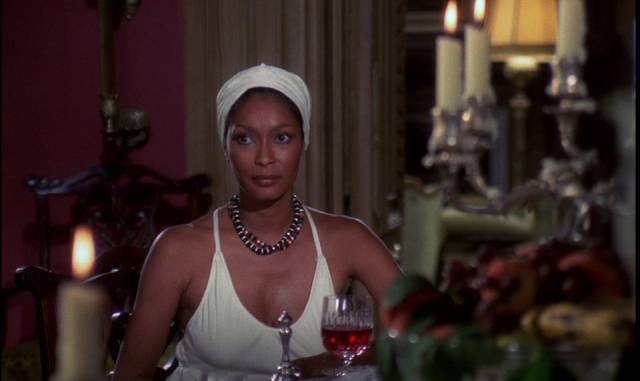
The coup de grâce, though, is delivered by first-time feature director Annett, who has zero sense of pacing (actually, it was his only theatrical feature in a forty-year television career). Sequences drag on interminably for no discernible reason other than to pad a thin story out to the requisite length. Which is a pity because it remains an interesting idea and the cast of British character actors could’ve made something of it all if given a chance. There’s Peter Cushing as a Norwegian werewolf authority; Charles Gray as his usual very ripe self; Anton Diffring adding his chilly intimations of fascism as Newcliffe’s head of security who operates all the cameras, microphones and motion sensors; television stalwart Tom Chadbon as a slightly louche artist; none other than a young Michael Gambon as a burnt-out concert pianist and Ciaran Madden, another television stalwart, as his ex-wife. Perhaps the most surprising presence is Marlene Clark, fresh from Bill Gunn’s Ganja & Hess (1973), adding a dose of elegance as Newcliffe’s wife.
As for the beast itself, it’s just a big dog in a wig, which seals the movie’s fate. It doesn’t even match the climactic shot when Annett resorts to a locked-off camera and a series of lap dissolves to turn the monster back into its now dead human form.
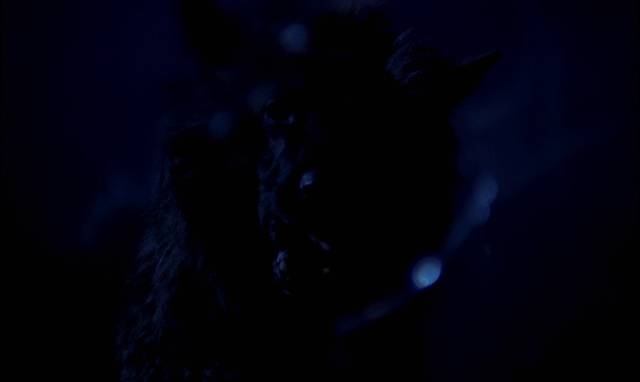
The Beast Must Die is one of those movies which isn’t simply dismissable as mediocre; it’s one which seriously disappoints because you can see how it could have been a really nifty slice of genre entertainment with some genuinely interesting elements if it had just been more competently made.
Produced on a relatively low budget, the film looks okay, but not impressive in Indicator’s transfer. Much of it takes place at night and some scenes are pretty dark, with limited detail, while others are overly bright day-for-night. There’s a commentary with director Annett in conversation with Jonathan Sothcott, and three lengthy archival audio interviews with producer Max J. Rosenberg, cinematographer Jack Hildyard and editor Peter Tanner. There’s an archival interview with Annett, a super-8 version, and a brief introduction by horror novelist Stephen Laws (who must be on a retainer for Indicator as he appears on many of their disks) in which he shows obvious affection for the movie.
Comments
I just finished up that Bruno box myself. I enjoyed the lot and was sad that they ended in such a way. I’ve watched several of the other versions of Maigret, most recently the Rowan Atkinson version, and I think that the Bruno headed version is going to be my fav. I did like the two Jean Gabin films that Kino has out.
I tried reading Simenon back in the 80s but didn’t take to his writing and stopped after 3 or 4 books. I did like one of his non Maigret novels a bit better. I’m perfectly happy to read something else and enjoy the TV shows.
When I was a kid in England there was a BBC series starring Rupert Davies as Maigret (more than fifty episodes) … although I was young I remember Davies in the role. I haven’t seen any of the more recent series and can’t really face Atkinson as Maigret.
Julien Duvivier made a couple of good movies based on Simenon – La tete d’un homme (1933), called Maigret’s War of Nerves in the Cremer series, and the non-Maigret Panique (1946) – both available from Criterion.
I don’t think Rowan was too popular as Maigret, they didn’t continue after the 4 episodes. I thought they were nicely produced but I think he’s my least fav Maigret. I wish the Rupert Davies episodes were available on DVD, there’s expensive Euro sets that I think are out of print, they are rather pricey.
There’s a series of German DVDs of the Davies show, very expensive and all dubbed into German, so pretty useless … Wikipedia says the series is still in the BBC archives (not apparently destroyed like so many BBC productions), so it’s puzzling they haven’t made any effort to release them…
I haven’t seen any of the Michael Gambon episodes either …
I watched the Gambon series back in 2016 and enjoyed them. There’s only 2 short seasons and they film in Budapest like the Cremer series did. I watched them from the library back then and a bit later ordered the Network DVDs. I found Gambon’s Maigret and Dumbledore rather similar.
I can’t help imagining that Atkinson’s Maigret is like Mr. Bean…
Not really. I was able to disassociate him from the Bean. I like some of the Mr Bean episodes but I haven’t seen them in several years. I do have the DVDs so I could watch them at some point but who knows when.
I always found Bean really irritating … much prefer Black Adder.
The great Jean Gabin made three Maigret movies in the 1950’s. They make the later Maigret series seem plodding and clumsy by comparison. Gabin’s best is Maigret and the St. Fiacre case. You could of course argue that Maigret in the books (and I’ve read most of them) is often described as seeming dull and inert, so that Gabin makes him too alert and lively. But in the books we know what Maigret is feeling about the day, the weather, and the people; whereas in the films we only know what we see and hear.
I see Kino has released the first two … I’ll definitely have to check them out.
I just found some episodes of a Russian Maigret series of Maigret movies on YouTube. In Russian and not so hot image wise but still interesting.
https://www.youtube.com/watch?v=KXIKkBx_Nww&t=7s
I did like the jean Gabin films from Kino.
Fascinating … pity there are no subtitles.